How the act of holding a door turned into redefining journalism: Learning from the insights of former NYT’s journalist Anthony Depalma
October 25, 2022
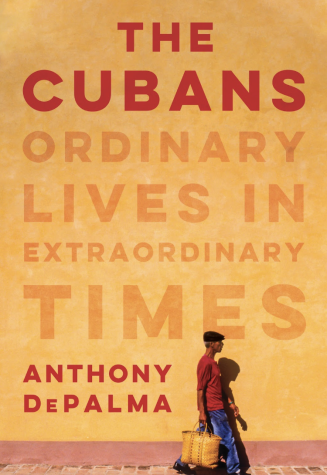 Anthony DePalma was a communication major at a small Catholic institution named Seton Hall University that has double the student body as Hamline and a “decent” basketball team.
Anthony DePalma was a communication major at a small Catholic institution named Seton Hall University that has double the student body as Hamline and a “decent” basketball team.
He interned doing broadcast journalism for New Jersey Public Television which was between the largest news market, New York City, and another major market, Philadelphia. He oversaw the network’s nightly newscast which was an anxiety-inducing process of broadcast offering no commercial break hiatus, meaning no opportunity to fix any hiccups and catastrophes that may arise last minute. DePalma describes this experience with a far-off look in his eyes as if he can still feel the grip of the constant broadcast deadline at his throat.
He made his way into free-lancing continuing to work hard, knowing that his initiative and self-drive set him apart from the crowd of storytellers and journalists. Eventually, he joined The New York Times (NYT) and become a local correspondent, a sort of microcosm exercise preparing a journalist for the role of foreign correspondent.
In 1993, he left the East Coast for the possibilities of NYT’s foreign news staff covering Mexico as it entered NAFTA with the U.S. and Canada, what the world saw as “Mexico entering the developed nations of the world.” This experiencee would impacted the trajectory of his career and journalism’s coverage and narrative of Latin America.
————————————————————————————–
I think as journalists we join a publication working for any section because of the passion we feel towards telling stories. Starting out, we feel the influence of the many journalists who came before, the many who work alongside us and those who will follow. The influence is palpable and carries with it an unescapable expectation and understanding of the responsibility of journalism.
After spending my high school years convincing myself I wanted to be a math teacher, the opportunity to write for Hamline’s student newspaper felt like a breath of honesty. Something inside of me wouldn’t let up from an interest in journalism. I envied the names in the byline of articles I read. I wanted to be one of them writing about election results and theatre reviews; I wanted to know what it was to have the power of making information accessible to an audience.
This was an uncharted passion for me as I clumsily began reporting three Octobers ago. I learned to counter my fervent interest in the juicy topics I had naively been conditioned to see as the most meaningful with the reality of the harm of that exclusionary thinking; everyday stories were being left out. The stories people use to position themselves and their identities.
I began to remind myself every week as I got my assignment that it did not matter what the story was. If it mattered to even just one person, then it was “meaningful enough” to write.
This mantra became the foundation of my work. I took any story. I wrote about anything from Homecoming events to the Clery Report to landscaping updates. Each time telling myself that if it mattered to one person, even if that one was the subject of my interview, I had captured a story the world was better off having published.
This ideology dismantled the impression I had of what was worth covering and whose story mattered enough to be written. It was no longer about the glamour of the “biggest” story or the rush of breaking news; for me, my journalism was about community, it was a way to platform stories. These stories mattered, in the purest essence of that word. I awoke to what all the most committed journalists knew and embodied, the principle to which they dedicated their lives.
————————————————————————————–
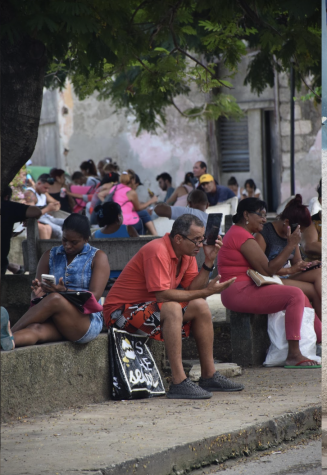 It’s a surreal experience watching someone talk about what they love. As a journalist, I devour these moments. It’s personal and inquisitive. It is like watching kindling catch spark. So, when I was invited to attend a visit with DePalma, I immediately cleared my schedule. It is not every day a journalist shares their insight, procedure and experiences with a class here at Hamline and after a life-long infatuation with the NYT, I simply couldn’t pass it up.
It’s a surreal experience watching someone talk about what they love. As a journalist, I devour these moments. It’s personal and inquisitive. It is like watching kindling catch spark. So, when I was invited to attend a visit with DePalma, I immediately cleared my schedule. It is not every day a journalist shares their insight, procedure and experiences with a class here at Hamline and after a life-long infatuation with the NYT, I simply couldn’t pass it up.
Hamline’s Communication Studies Department arranged DePalma’s visit in collaboration with Global Minnesota. He was going to share stories from his career and his most recent book published in 2020, “The Cubans: Ordinary Lives in Extraordinary Times.”
As I entered GLC, running a surprisingly ten minutes early, I followed two men in. One of them wore a suit and tie and the other had on an orange quarter zip and fall scarf. He held the door as I passed.
Immediately through the doors, they bumped into Communication professor Suda Ishida who had perfected the details of the visit. An array of giddy laughter broke from both parties. I followed in the direction hoping to not disturb their conversation until they stopped short in front of me and I faintly heard Ishida introduce the bundled-up DePalma to a bundled-up me.
In my rush to get to the visit, I hadn’t even known DePalma himself had held the door open for me and was now holding out his hand for me to shake. I’ve met people before and shaken hands, but all I could think about was whether, in my frenzied state, I thanked him for holding the door or not.
There was a warm smile from both men as Ishida introduced me as the Editor in Chief of Hamline’s student paper. A series of polite and supportive small talk followed, a common occurrence I’ve found professional journalists’ to give when celebrating the work of the hopeful next generation.
I offered a quick smile and thank you — figuring it was better late than never — and settled into a seat, taking off my fall layers while I watched him do the same as he chatted with Ishida and Professor Marceleen Mosher. He was unassuming as the students of the Introduction to Communications class found their seats and withdrew from conversations and phone screens. An ease settled over the room. DePalma had made it clear; this was no lecture, this was a conversation.
It’s not surprising; professional journalists, I have learned, can be the speaker in the room and still make you feel as if you’re the focus. It’s not from a place of malice, of finding the story in everything they do, but from a place of genuine care that is the currency of their careers.
——————————————————————————————-
DePalma believes being a local correspondent helped him land the job in Mexico City, but his familiarity with Spanish helped. Learning a different language is about communicating with those around you, but it’s also about empathizing with another culture and community, benefits DePalma had that NYT could not overlook.
“If you are graduating without knowing another language, don’t graduate,” he advises with a knowing smile.
When DePalma was in Mexico to cover the first-ever trade agreement between Canada, Mexico and the U.S. the equivalent of a Civil War broke out in protest to NAFTA. The predicted business and commerce coverage disappeared as new headlines about the Zapatista uprising, the assassination of Luis Donaldo Colosio, the peso crisis and the emergence of democracy in Mexico took precedence.
These new tensions and topics were unplanned and his responsibility as a foreign correspondent took on new importance. As he recounted the events I could not stop thinking about what it means to be an American journalist as a foreign correspondent in a nation going through a reckoning. As journalists, it is not our job to select the pretty and polished situations to cover. We witness and report what’s happening, whether that be stories of communities at their very best or worst, or anything in between. Yet, oftentimes we find ourselves immersed in the community. For DePalma he knew the language and the culture; he was now living there, with a job connected to an American publication, but he was a member of a city and neighborhood, nonetheless.
A professor once described this process of being part of a community while simultaneously being a journalist as scrutinizing the tension between witness and observation. As journalists, we platform stories, but are we ever really separate from them, especially when we’re not “parachuting in?” I struggle to reconcile this difference. What is lost if we remove ourselves from witnessing and reporting from an angle of objectivity that requires a wall between us and the story? What is gained when we recognize the observations we are making and holding and how they influence our work? How do we address that level of subjectivity that exists no matter how much we are told to stomp it out?
——————
Foreign correspondents also write obituaries for leaders in their geographical area to send to their hosting publication. These are written in both antemortem and postmortem. When written pre-death, it allows the journalist and publication time to prepare, draft and edit at great length so that by the time the person dies and the obituary is published, readers will be left asking how anyone could have ever written that so quickly. The secret is they’ve had it stockpiled in a folder on their desktop waiting for this day.
One obituary DePalma was asked to write was for Fidel Castro, which ran in 2016. This came 10 years after a 2006 article he wrote titled “A Debt to Castro” adapted from an essay in his book “The Man Who Invented Fidel: Castro, Cuba and Herbert L. Matthews of The New York Times.”
In the 2006 article, he explained that it was due to Castro and his influence over Cuba, that DePalma’s wife came to the U.S. Sometimes journalists have personal connections that transpire into the work. For DePalma, his entry point to Cuba was his wife.
“I was filled with thoughts of all that might not have been. One bullet and there would have been no revolution. No exiles,” DePalma wrote in his 2006 article. “Most of all, for me, no emerald-eyed beauty who would teach me to laugh, and to whom I impatiently waited to get back. The truth was that I, unlike most, had reason to thank Fidel.”
——————————————————-
Sometimes being a journalist is about being a human first. DePalma filled his suitcase with Neosporin, Pepto-Bismol, Advil and other necessities we take for granted in the U.S. as he prepared to fly to Cuba and share the published book with interviewees.
The reality in places like Cuba with totalitarian governments is that they do not know their future. It is not promised the way it is here. The most privileged American’s level of entitlement over their future is incomprehensible compared to Cubans’ reality.
“The key for American politicians to understanding Cuba’s politics is understanding its people and the promises of a better life that were not kept,” DePalma wrote in an opinion article titled “How Cubans Lost Faith in Revolution” about the people of Cuba’s experience and lives, something that was adapted from his book “The Cubans.”
Throughout COVID-19, the border from America to Cuba had been closed which made his travel plans delayed. Then Cuba caught wind of his book. In the process of writing “The Cubans,” he used a traveler’s visa intentionally. Once it was published, the Cuban government would not let him or his suitcase of much-needed Neosporin and Advil in.
__________________________________________
In selecting the stories for his book, he was looking for extraordinary stories in the lives of ordinary people, as the title suggests. DePalma didn’t think Havana would be the place to find these stories. So he used his background of New York City’s Manhattan versus Brooklyn in proximity to Cuba’s Old Havana and Guanabacoa. It sat across the harbor, such as in NYC. This was an entry point he used to help narrow in on Guanabacoa for drawing the geographical focus.
The stories he found covered many aspects and perspectives of Cuba including those in support of the governmental systems and others. Penguin Random House describes DePalma’s book as “a moving snapshot of Cuba with all its contradictions as the new regime opens the gate to the capitalism that Fidel railed against for so long.” DePalma captured these stories over time and pieced them together telling the story of Cuba’s people and the way they orbit within the borders and systems in place.
This focus on the ordinary within the extraordinary was what my mantra was all about, with a huge caveat of a much different geographical location and governmental situation. For instance, almost all my interviewees have not mentioned a fear of what may happen tomorrow and they expect to see me throughout and after publishing the piece.
DePalma sought out the stories readers could relate to with the condition that Cubans live in a reality that is unique and, at times, challenging and dangerous. Telling about these ordinary lives does not ever stop at one. The process is an ongoing anthology that readers can enter, explore and follow. Journalism stands as a record, a simultaneous time capsule, and a living, breathing document. We write not to matter at the moment alone; journalists write to tell stories that will serve communities for the better over time.
—————————
As journalists, we often discuss what it means to cover the communities and stories we feature. At The Oracle, we try to make space to scrutinize the questions related to representation and observation, questions Depalma’s career answers through practice.
We have come to find that questions about witnessing and how we fit into the storytelling have no clear answers. Instead, it is a bit of this and that, and everything in between. The answers are found within DePalma’s commitment and determination. His genuine care towards the subject matter and people. His ability for learning, humility and being affable. Journalism like this has the power to change the perceived narratives of entire nations. It has the power to platform and showcase the ordinary in all the extraordinary ways.

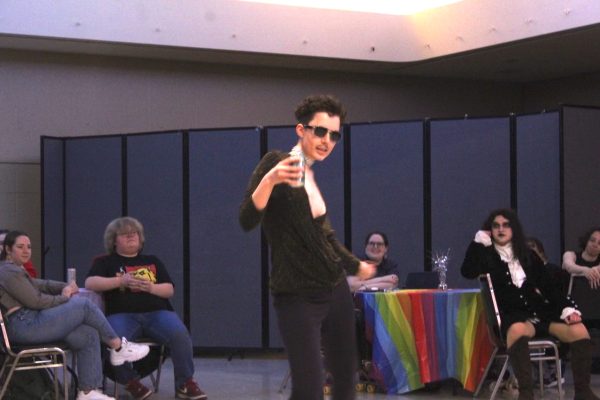
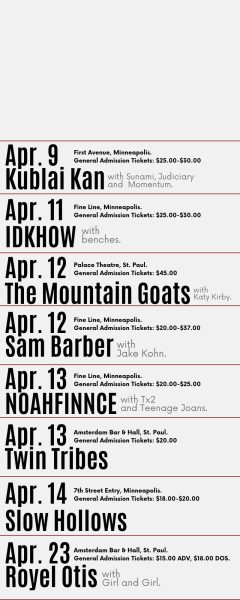

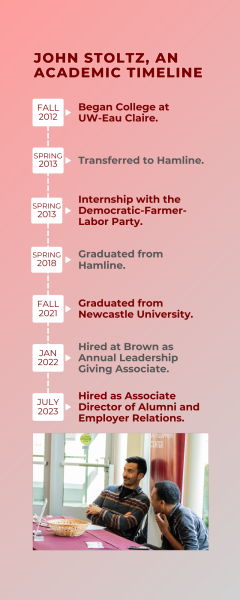
Anthony DePalma • Oct 25, 2022 at 4:44 pm
Dear Anika,
I’m back at home now after my visit to your campus and I’ve just had the chance to see your article. I commend you for the thoroughness you display here. In particular, I appreciate the effort you put into researching some of my articles and using what you found there in effective ways. By doing that, you show the kind of self-start and enterprise I had talked about in that meeting in your class; the qualities that every newsroom seeks. I’d say, based on what I’ve read here, that you’ve got the makings of an observant journalist, a critical thinker armed with quick perception, loads of empathy and intense drive.
My best wishes to you as you pursue your career. And yes, be assured, you did thank me for holding the door. It was my pleasure.
Sincerely,
Anthony DePalma